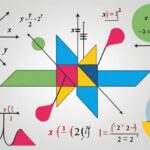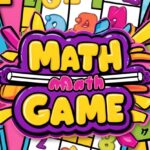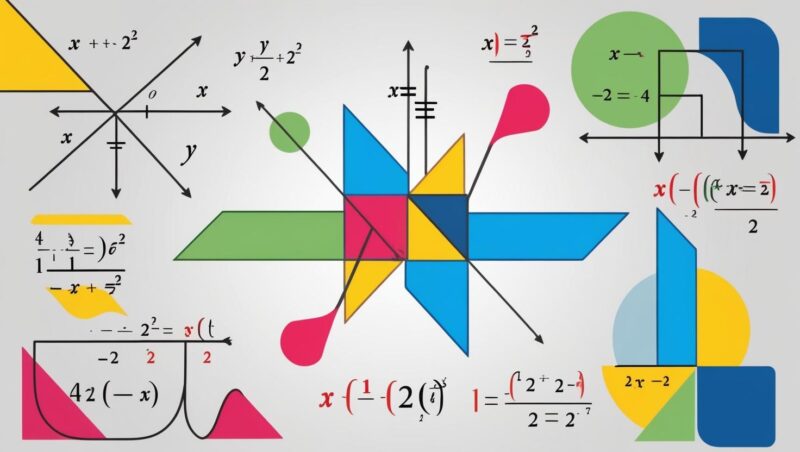
Share Post:
Algebra 1 helps students learn how to work with numbers, symbols, and equations in new ways. It teaches how to solve problems, find patterns, and understand relationships between numbers. Learning algebra makes math easier and prepares students for more advanced topics.
This guide will explain what students will learn in Algebra 1, step by step.
Table of Contents
ToggleLesson 1: Expressions and Variables

Expressions are math sentences with numbers, variables, and operations but no equal sign. A variable is a letter, like x or y, that represents a missing number.
Example: 3x + 5
- 3x means 3 times a number
- +5 means adding 5
Why Are Variables Important?
Variables help solve problems by making math simpler. Instead of guessing a missing number, algebra helps find it.
Example: If someone has x apples and gets 5 more, they have x + 5 apples. If they started with 10, then x = 10, so they now have 10 + 5 = 15.
How to Simplify Expressions
- Combine Like Terms – Terms with the same variable can be added or subtracted.
Example: 4x + 3x = 7x - Use the Distributive Property – Multiply numbers outside parentheses by everything inside.
Example: 2(3x + 4) = 6x + 8
Common Mistakes to Avoid
- Forgetting to combine like terms: 5x + 2x + 4 ≠ 7x + 4x
- Distributing incorrectly: 3(2x + 1) should be 6x + 3, not 6x + 1
Real-Life Applications
- Shopping – If each toy costs x dollars and you buy 4, total cost is 4x.
- Travel – A car moving 60 miles per hour for t hours travels 60t miles.
- Saving Money – Saving 5 dollars per week means after w weeks, you have 5w dollars.
Useful Tips
✔ Always combine like terms.
✔ Use parentheses correctly.
✔ Follow the order of operations.
Not sure about the correct order of operations? Learn how BODMAS, BIDMAS, and PEMDAS help simplify expressions step by step in this detailed guide.
Lesson 2: Equations and Inequalities

An equation shows that two expressions are equal, using =
Example: 3x + 5 = 11.
- > means greater than
- < means less than
- ≥ means greater than or equal to
- ≤ means less than or equal to
Example: 2x + 4 > 10 means 2 times a number plus 4 is greater than 10.
How to Solve One-Step Equations
Find the missing value by performing the opposite operation.
- Addition Example:
Solve x + 7 = 12
Subtract 7 from both sides → x = 5
- Multiplication Example:
Solve 5x = 20
Divide by 5 → x = 4
How to Solve Multi-Step Equations
- Simplify both sides.
- Move the variable to one side.
- Solve for x using opposite operations.
Example: Solve 2x + 3 = 11
Subtract 3 from both sides → 2x = 8
Divide by 2 → x = 4
Solving Inequalities
Solve inequalities like equations, but reverse the sign if multiplying or dividing by a negative number.
Example: Solve -2x < 8
Divide by -2 (flip the sign) → x > -4
Graphing Inequalities
- Open circle for < or > (number not included).
- Closed circle for ≤ or ≥ (number included).
- Arrow shows numbers greater or smaller.
Example: If x ≥ 3, draw a closed circle on 3 with an arrow going right.
Common Mistakes to Avoid
- Forgetting to flip the inequality sign when dividing by a negative.
- Not doing the same operation to both sides.
Real-Life Applications
- Shopping – If a jacket costs x dollars and you have $50, the inequality is x ≤ 50.
- Speed Limits – If a car must go under 60 mph, the inequality is s < 60.
- Budgeting – If you earn y dollars per hour and need at least $100, the inequality is y × hours ≥ 100.
Tips for Success
✔ Do the same operation to both sides.
✔ Flip the sign when dividing by a negative.
✔ Check answers by plugging them back in.
Lesson 3: Working with Functions
A function is a rule that takes an input and gives exactly one output. It follows a pattern, meaning for every input, there is only one possible output.
Example: If the function adds 2 to any number, then:
- Input 3 → Output 5
- Input 7 → Output 9
Function Notation
Instead of writing y = 2x + 3, functions use notation like f(x) = 2x + 3.
- f(x) means “function of x” or “output when x is used.”
- If x = 4, then f(4) = 2(4) + 3 = 11.
How to Identify a Function
A relation is a function if no input has more than one output.
- Function Example:
(1,2), (2,3), (3,4) → Each input has one output. - Not a Function Example:
(1,2), (1,3), (2,4) → The input 1 has two outputs (2 and 3), so not a function.
Graphing Functions
Functions can be graphed as ordered pairs (x, y). A function is a straight or curved line with no repeated x-values.
Example: Graph the function y = 2x + 1
- Input x = 0, then y = 1 (point (0,1))
- Input x = 2, then y = 5 (point (2,5))
- Connect points with a straight line.
Real-Life Applications
- Temperature – A function can show how temperature changes each hour.
- Bank Accounts – A function can show money growth over time.
- Speed – A function can relate time and distance traveled.
Common Mistakes to Avoid
- Repeating x-values in a function – Each input must have one output.
- Forgetting function notation – f(x) replaces y in equations.
Useful Tips
✔ Every input has exactly one output.
✔ Use tables and graphs to check patterns.
✔ Function notation f(x) replaces y.
Lesson 4: Linear Equations and Graphing

A linear equation shows a straight-line relationship between two variables. It follows the form:
y = mx + b
- m = slope (how steep the line is)
- b = y-intercept (where the line crosses the y-axis)
Example: y = 2x + 3
- Slope = 2 (line rises 2 for every step right)
- Y-intercept = 3 (line crosses y-axis at 3)
How to Find Slope
Slope (m) is found using two points:
m = (change in y) ÷ (change in x)
Example: Find slope between (1,2) and (3,6)
- Change in y: 6 – 2 = 4
- Change in x: 3 – 1 = 2
- Slope = 4 ÷ 2 = 2
Graphing a Line Step by Step
- Plot the y-intercept (b) on the y-axis.
- Use the slope (m) to find the next point.
- Draw a straight line through both points.
Example: Graph y = 3x – 2
- Start at (0, -2) (y-intercept)
- Move up 3, right 1 (slope 3)
- Draw a straight line through the points
Real-Life Applications
- Driving – Speed vs. time follows a straight-line function.
- Business – A store’s sales can be modeled with a linear equation.
- Construction – Architects use linear equations to design slopes.
Common Mistakes to Avoid
- Misplacing the y-intercept – Start at b, not x-axis.
- Incorrect slope rise/run – Always divide y-change by x-change.
Useful Tips
✔ y = mx + b is the key formula.
✔ Slope = rise ÷ run.
✔ Graphing is easier with tables and points.[/su_note]
Lesson 5: Systems of Equations

A system of equations is two or more equations with the same variables. The goal is to find values that make both equations true.
Example:
- x + y = 5
- 2x – y = 1
How to Solve Systems of Equations
There are three main methods:
1. Substitution Method
- Solve one equation for a variable.
- Replace that variable in the other equation.
Example:
- Solve x = 5 – y from x + y = 5.
- Replace x in 2x – y = 1 → 2(5 – y) – y = 1.
- Solve for y, then find x.
2. Elimination Method
- Add or subtract equations to remove a variable.
Example:
- x + y = 5
- 2x – y = 1
- Add both equations: 3x = 6, so x = 2.
- Substitute x into the first equation to find y = 3.
3. Graphing Method
- Graph both equations on a coordinate plane.
- The point where they meet is the solution.
Example:
If y = 2x + 1 and y = -x + 4, graph both and find where they cross.
Lesson 6: Polynomials and Factoring

A polynomial is an expression with multiple terms, using addition, subtraction, and multiplication.
Example:
- x² + 3x – 4 (polynomial with three terms)
- 5x³ – 2x² + 7 (polynomial with three terms)
Adding and Subtracting Polynomials
- Combine like terms (same variable and exponent).
- Example:
- (3x² + 2x + 1) + (5x² – x – 4) = 8x² + x – 3
Multiplying Polynomials
Multiply each term in the first polynomial by each term in the second.
Example: (x + 3)(x – 2)
Use the FOIL method:
- First: x * x = x²
- Outer: x * (-2) = -2x
- Inner: 3 * x = 3x
- Last: 3 * (-2) = -6
- Final result: x² + x – 6
Factoring Polynomials
Factoring is rewriting a polynomial as a multiplication problem.
One useful method for factoring quadratics is the Box Method, which visually breaks down the polynomial to make factoring easier and more structured.
Example:
Factor x² + 5x + 6.
- Find two numbers that multiply to 6 and add to 5 (2 and 3).
- Answer: (x + 2)(x + 3).
Lesson 7: Quadratic Functions and Equations

Quadratic equations have x² as the highest exponent and follow the form:
y = ax² + bx + c
Example: y = x² – 4x + 3
Graphing Quadratic Functions
- Quadratics create a U-shaped curve called a parabola.
- The highest or lowest point is the vertex.
- The axis of symmetry splits the parabola in half.
Solving Quadratic Equations
There are three common methods:
1. Factoring
Example: Solve x² – 5x + 6 = 0
- Factor: (x – 2)(x – 3) = 0
- Set each factor to zero: x – 2 = 0 or x – 3 = 0
- Solutions: x = 2, x = 3
2. Quadratic Formula
For ax² + bx + c = 0, use:
x = (-b ± √(b² – 4ac)) / (2a)
Example: Solve x² – 4x – 5 = 0.
- a = 1, b = -4, c = -5
- Plug into the formula to find x = 5, x = -1.
Lesson 8: Data, Statistics, and Probability

Statistics help organize and understand information using numbers and graphs.
1. Measures of Central Tendency
- Mean – The average (add all numbers, divide by how many).
- Median – The middle number when numbers are in order.
- Mode – The most frequent number in a set.
Example: 2, 4, 4, 6, 8
- Mean: (2+4+4+6+8) ÷ 5 = 4.8
- Median: 4 (middle number)
- Mode: 4 (appears twice)
2. Understanding Probability
Probability measures how likely something is to happen. It follows:
Probability = (Number of Favorable Outcomes) / (Total Outcomes)
Reading Graphs
- Bar Graphs – Compare different categories.
- Line Graphs – Show trends over time.
- Pie Charts – Show percentages of a whole.
Real-Life Applications
- Sports – Analyzing player stats.
- Weather – Predicting rainfall chances.
- Business – Tracking sales trends.
Final Thoughts
Algebra 1 teaches essential math skills that help students solve problems and understand real-world situations. Each lesson builds on the previous one, making it easier to grasp complex ideas.
These lessons are designed for students typically in 8th grade. At this level, students begin working with abstract math concepts, preparing them for more advanced courses like Algebra 2 and Geometry.
Related Posts:
- Algebra 2 Essentials in 2025 – Must-Know Concepts & Skills
- 10 Tips to Help Year 6 Students Understand Place Values
- Standing or Sitting - Which Posture Helps Students…
- Connectivism Learning Theory - How Kids Learn by…
- Why Microlearning Is a Great Way for Kids to Learn…
- How to Choose the Best Degree for Future Job…











